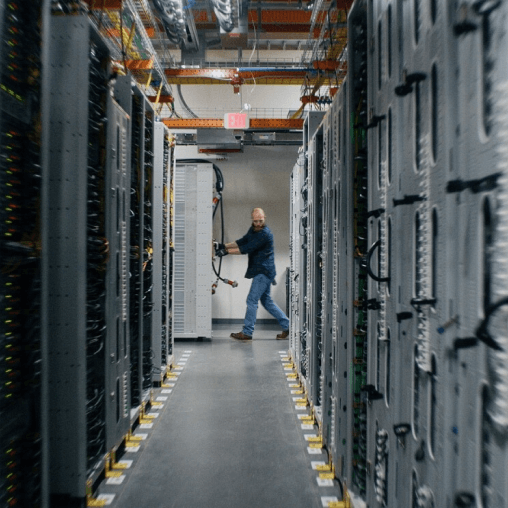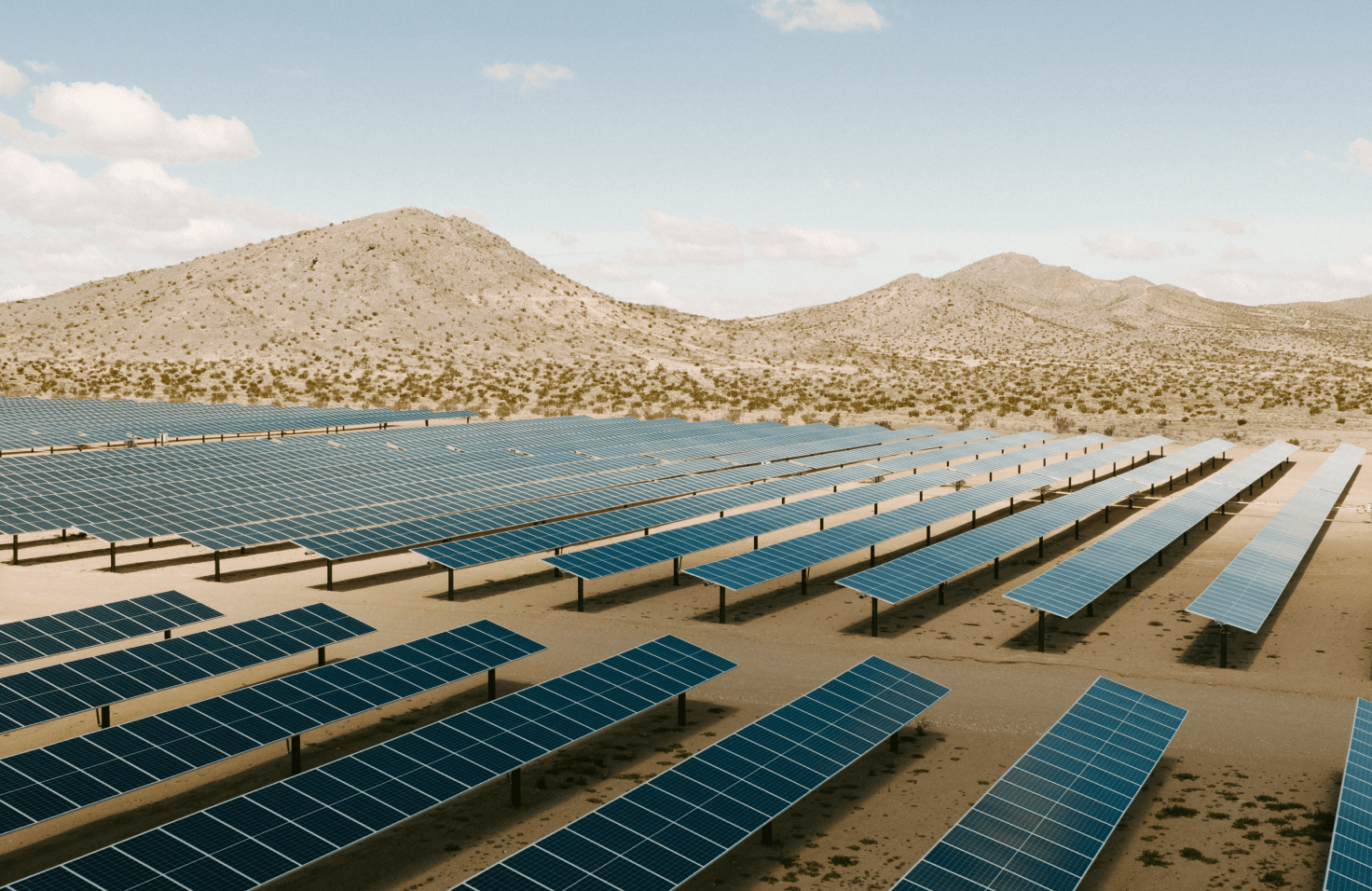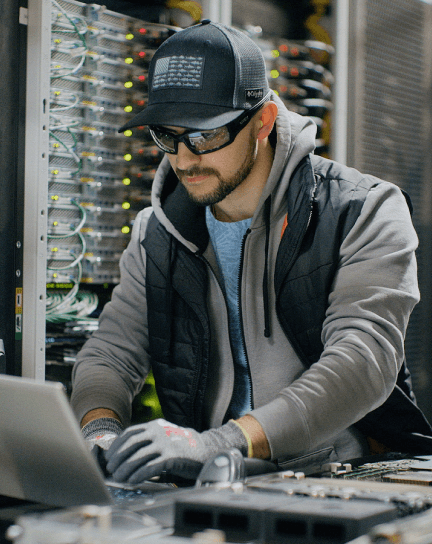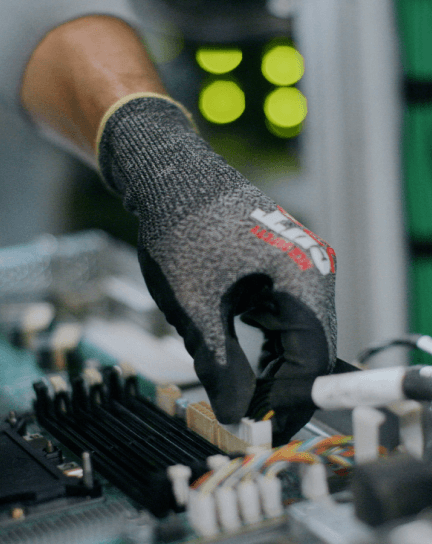AWS Cloud
Amazon Web Services (AWS) is the world’s most comprehensive and broadly adopted cloud offering, with millions of global users depending on it every day. To build a sustainable business for our customers and for the world we all share, we’re designing data centers that provide the efficient, resilient service our customers expect while minimizing our environmental footprint—and theirs.
, opens in a new tab
Our approach
Increasing efficiency
.jpg)
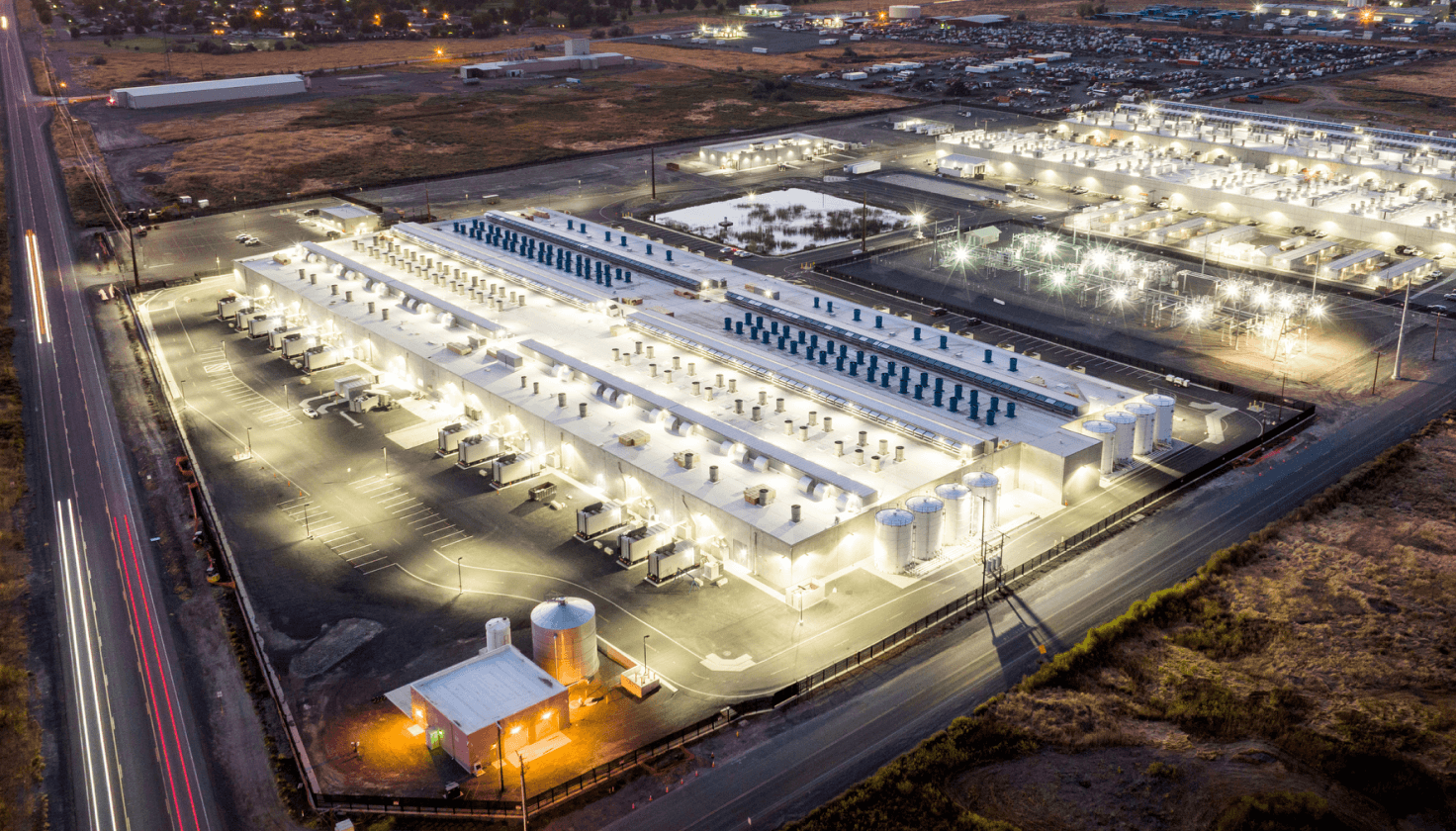
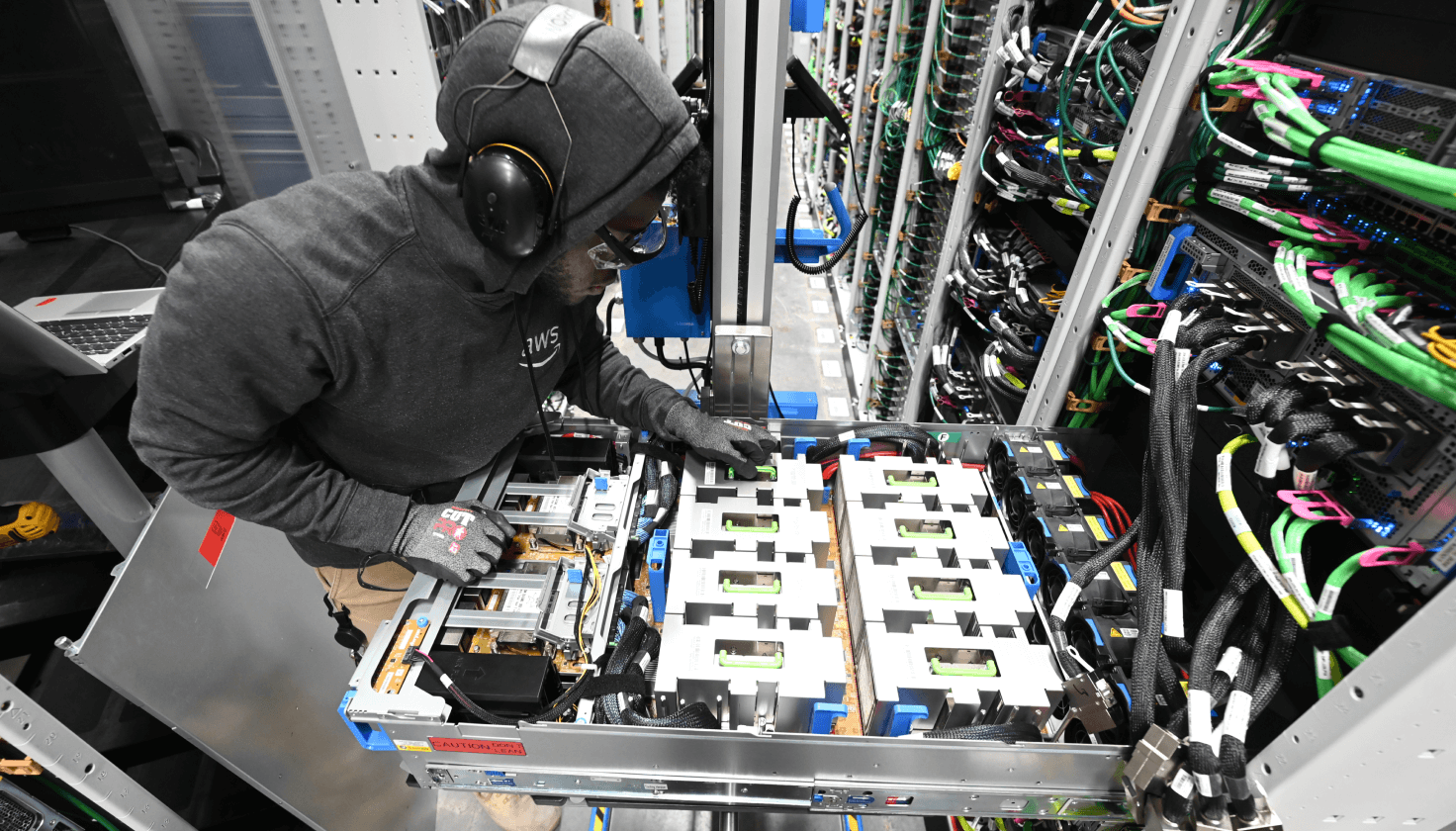
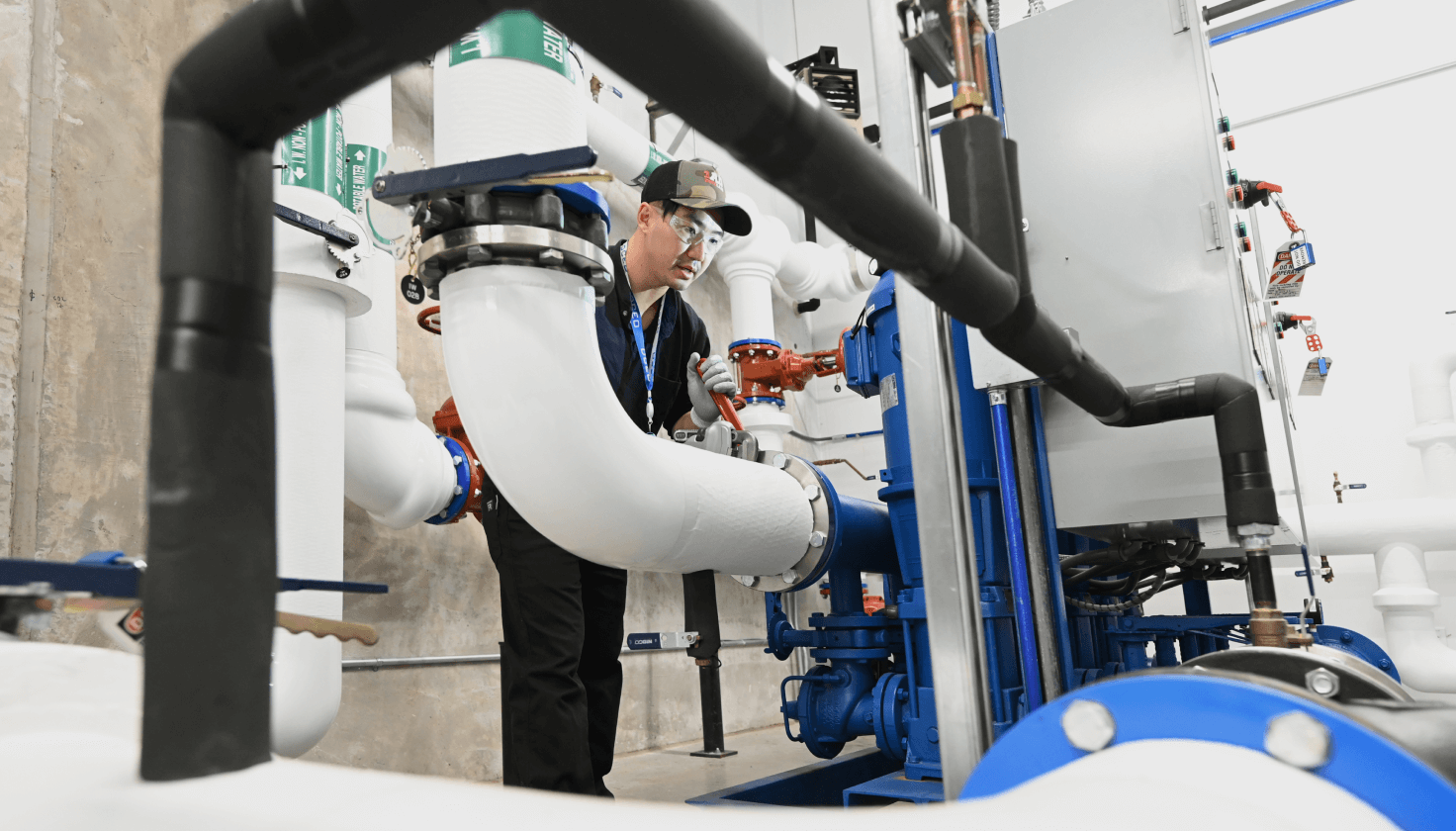

Power usage effectiveness and water usage effectiveness
Power usage effectiveness
PUE is a measure of data center efficiency. A lower PUE indicates a more efficient data center and a PUE score of 1.0 is perfect. AWS calculates PUE using the internationally-recognized principles of the International Organization for Standardization (ISO) in line with our PUE Methodology.
In 2024, AWS data centers reported a global PUE of 1.15, and our best performing site was in Europe with a PUE of 1.04. In the Americas, our best performing site had a PUE of 1.05, and in Asia Pacific it was 1.07. These ratings are better than both the public cloud industry average of 1.25 and 1.63 for on-premises enterprise data centers, as estimated by the International Data Corporation.+
+IDC, 2H Datacenter Trends: Sustainable Datacenter Builds and CO2 Emissions. Doc # US51911924, January 2025’
Water usage effectiveness
Global infrastructure teams deploy cloud-based technology in AWS data centers to determine and track efforts to maintain or improve WUE. These efforts have helped AWS achieve a global data center WUE of 0.15 liters of water withdrawn per kilowatt-hour of IT Load (L/kWh) in 2024, a 17% improvement from 2023 and a 40% improvement since 2021.
See available regions PUE and WUE
The following data includes average PUE and WUE ratings for data center regions designed and operated by AWS between January 1 and December 31 of each year. Data is not available (—) where AWS operated data centers less than 12 months.
AWS Geography PUE and AWS Region PUE
While year-over-year reported PUE has improved or remained stable in the vast majority of our Regions, a few Regions saw slightly higher PUE values in certain years. The primary reasons for this include different weather patterns that require different amounts of cooling, and the launch of new, not-yet fully loaded data centers within a Region. These result in higher average PUEs for the specific Region while data center utilization increases.
AWS Geography PUE and WUE
| Geography | PUE 2022 | PUE 2023 | PUE 2024 | WUE 2024 |
|---|---|---|---|---|
| Global | 1.15 | 1.15 | 1.15 | 0.15 |
| Europe | 1.11 | 1.11 | 1.11 | 0.04 |
| Midde East | 1.38 | 1.33 | 1.31 | N/A |
| Africa | 1.36 | 1.24 | 1.24 | N/A |
| North America | 1.14 | 1.14 | 1.14 | 0.13 |
| Central/South America | N/A | 1.18 | 1.17 | 0.23 |
| Asia Pacific (excl. China) | 1.26 | 1.28 | 1.27 | 0.98 |
| China | 1.28 | 1.26 | 1.25 | N/A |
AWS Region PUE and WUE
| AWS Region | PUE 2022 | PUE 2023 | PUE 2024 | WUE 2024 |
|---|---|---|---|---|
Europe (Stockholm) |
1.12 |
1.12 |
1.10 |
0.02 |
| Middle East (Bahrain) | 1.38 | 1.32 | 1.33 | N/A |
| Asia-Pacific (Mumbai) | 1.43 | 1.44 | 1.42 | N/A |
| Asia-Pacific (Jakarta) | 1.39 | 1.35 | 1.40 | 2.75 |
| U.S. East (Ohio) | 1.12 | 1.12 | 1.13 | 0.10 |
| Africa (Cape Town) | 1.36 | 1.24 | 1.24 | N/A |
| Europe (Ireland) | 1.10 | 1.10 | 1.11 | 0.03 |
| Middle East (UAE) | -- | 1.36 | 1.27 | N/A |
| Europe (Frankfurt) | 1.32 | 1.33 | 1.35 | 0.01 |
| South America (Sao Paulo) | -- | 1.18 | 1.17 | 0.23 |
| Asia-Pacific (Hyderabad) | -- | 1.50 | 1.46 | N/A |
| U.S. East (Northern Virginia) | 1.16 | 1.15 | 1.15 | 0.12 |
| Asia-Pacific (Melbourne) | -- | 1.08 | 1.07 | 0.02 |
| Asia-Pacific (Tokyo) | 1.30 | 1.32 | 1.27 | 0.91 |
| U.S. West (Oregon) | 1.13 | 1.13 | 1.12 | 0.16 |
| U.S. West (Northern California) | 1.17 | 1.17 | 1.18 | 0.51 |
| Asia-Pacific (Singapore) | 1.33 | 1.30 | 1.32 | 1.68 |
| Asia-Pacific (Sydney) | 1.15 | 1.15 | 1.16 | 0.12 |
| Canada (Central) | 1.26 | 1.22 | 1.19 | 0.04 |
| Europe (Spain) | -- | 1.11 | 1.09 | 0.24 |
| China (Ningxia) | 1.28 | 1.26 | 1.25 | N/A |
| Canada (West) | -- | -- | 1.17 | 0.08 |
*As our Jakarta data center capacity increases and our water treatment solutions are introduced in 2025, we expect WUE to reach our target design value. It is not possible for AWS to use our Direct Evaporative design in the Jakarta region, but AWS does have plans to deliver recycled water for cooling in the region while pursuing this WUE target.
Efficiency of scale
Predicting performance
Cooling efficiency
Power efficiency

